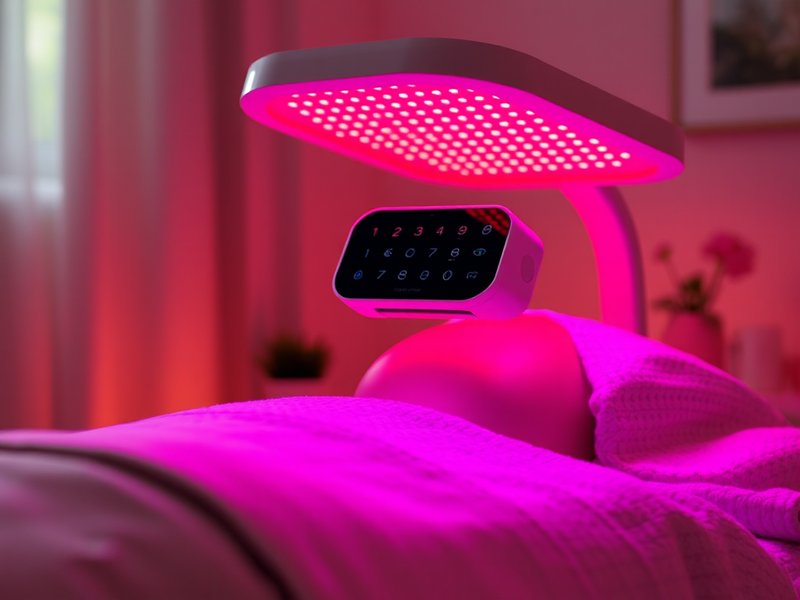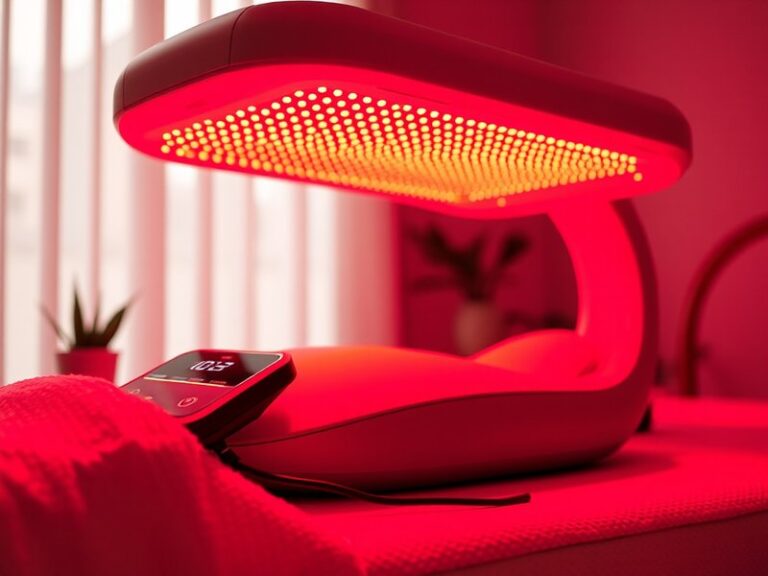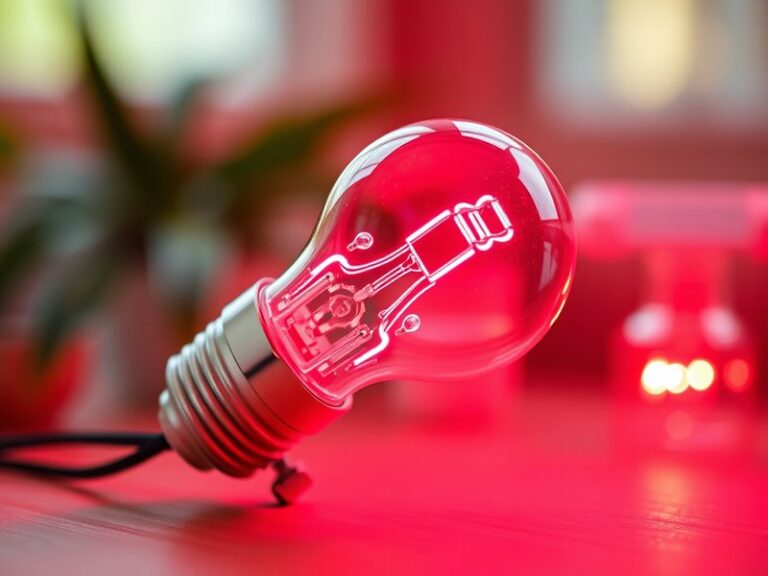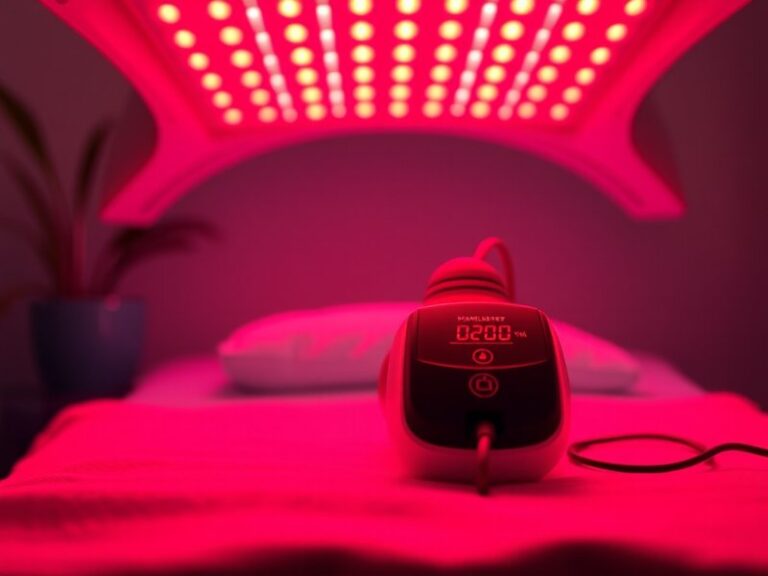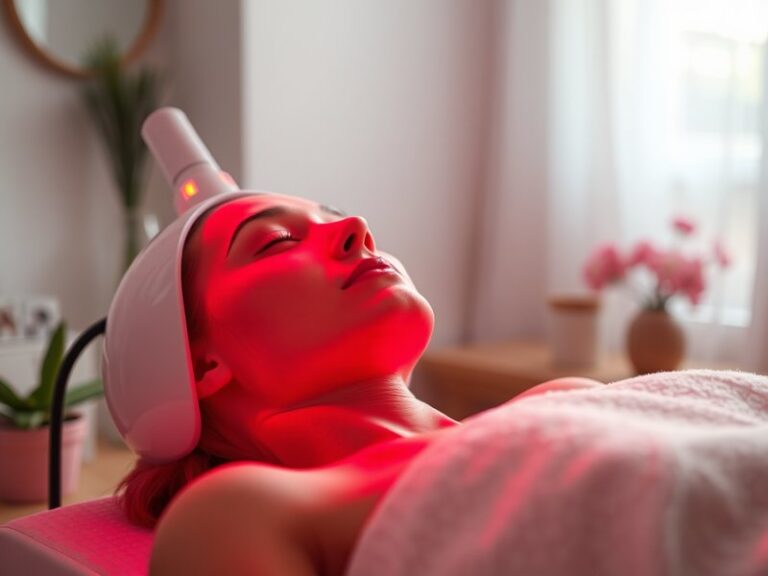When Should You Use Red Light Therapy?
When Should You Use Red Light Therapy?
Have you ever wondered how light can heal?
Red light therapy (RLT) has gained popularity in recent years as a promising treatment for various conditions, including skin issues, pain, and inflammation. This article will delve into the optimal scenarios for using red light therapy, its benefits, considerations, and alternatives, providing a balanced perspective to help you understand when and why you might want to incorporate it into your wellness routine.
Key Takeaways
- Red light therapy can enhance skin health, reduce inflammation, and alleviate pain.
- It is a non-invasive option suitable for various conditions, making it a popular choice in wellness circles.
- Understanding individual health needs and circumstances is crucial before starting any therapy.
What is Red Light Therapy?
Red light therapy is a non-invasive treatment that uses low-level wavelengths of red light to improve skin health and promote healing. It operates through a process called photobiomodulation, where light exposure affects cellular functions, leading to enhanced energy production, reduced inflammation, and improved blood circulation.
RLT can be administered through devices such as handheld wands, panels, or beds, making it versatile for at-home or clinical use. The therapy is generally considered safe and painless, with treatments typically lasting between 10 to 30 minutes depending on the condition being treated.
What are the Benefits of Red Light Therapy?
Red light therapy offers several potential benefits that can significantly enhance overall well-being. Let’s explore these advantages in detail.
Enhances Skin Health
One of the primary applications of red light therapy is in dermatology. Research indicates that RLT can help improve skin tone, reduce wrinkles, and minimize scars by stimulating collagen production. Many users report noticeable improvements in skin texture and clarity after consistent treatments.
Reduces Pain and Inflammation
RLT has been observed to alleviate pain associated with arthritis and muscle injuries by reducing inflammation. Clinical studies suggest that RLT can help increase blood flow to injured areas, thereby promoting quicker recovery and pain relief.
Boosts Muscle Recovery
Athletes often turn to red light therapy for its recovery benefits. Studies indicate that RLT can help reduce muscle soreness and accelerate recovery after intense workouts. By improving mitochondrial function in muscle cells, athletes may experience enhanced performance through quicker recovery times.
Improves Hair Growth
Some research suggests that RLT can benefit individuals experiencing hair loss, such as androgenetic alopecia. Stimulating hair follicles with red light may promote hair regrowth and thickness, providing a non-invasive alternative to traditional hair restoration methods.
Supports Joint Health
For individuals dealing with joint pain or conditions like rheumatoid arthritis, RLT may provide relief. By reducing inflammation and promoting healing in joint tissues, users may experience improved mobility and decreased discomfort.
Is it Possible to Use Red Light Therapy at Home?
Yes, it is entirely feasible to use red light therapy at home, thanks to the availability of portable devices. Many at-home devices are designed to deliver effective treatments safely and conveniently.
What are the Advantages of Home Use?
Using red light therapy at home offers several key advantages.
Convenience and Accessibility
Home devices allow users to receive therapy without needing to travel to a clinic. This convenience enables more frequent treatments, potentially enhancing results.
Cost-Effective
Investing in an at-home device can be more economical over time compared to multiple consultations at a clinic, especially for those who wish to use RLT regularly.
Personalized Treatment
At-home therapy allows individuals to tailor their treatment duration and intensity to their specific needs, providing a personalized approach to wellness.
Discover our thoughts on Does LED Red Light Therapy Reduce Wrinkles?
What are the Disadvantages of Home Use?
While using red light therapy at home has its perks, there are certain disadvantages to consider.
Potential for Improper Use
Without the guidance of a professional, individuals may misuse the device, either by incorrect settings or inadequate treatment times, which could result in suboptimal outcomes.
Limited Device Strength
Some home devices may not be as powerful as those used in clinical settings. Users may need to invest in high-quality devices for the best results.
Find all the details in Benefits of Red Light Therapy
Need for Consistency
Achieving desired results requires regular sessions, which may require commitment and consistency that some may find challenging.
What are the Things to Consider Before Using Red Light Therapy?
Before starting red light therapy, it’s essential to weigh various factors that can influence its effectiveness and safety.
Consult with a Healthcare Provider
Discussing with a healthcare professional before beginning RLT is crucial, especially for individuals with underlying health conditions or those pregnant or nursing.
Understand Your Specific Needs
Identifying your goals for therapy and considering how RLT aligns with those goals will help you set realistic expectations and determine the appropriate treatment schedule.
Research Device Options
If considering at-home devices, it’s essential to research their specifications and reviews to ensure you select a reputable and effective product.
What are the Alternatives to Red Light Therapy?
If red light therapy does not seem like the right fit for you, several alternative treatments can address similar health concerns.
Cold Laser Therapy
This technique uses specific wavelengths of light to promote healing and reduce pain, offering a similar but distinct approach to therapeutic light.
Ultrasound Therapy
Ultrasound treatment utilizes sound waves to penetrate deep tissues, providing pain relief and stimulating healing, making it an excellent alternative for musculoskeletal conditions.
Cryotherapy
Unlike RLT, cryotherapy involves exposing the body to extremely cold temperatures, which can reduce inflammation and provide pain relief for various conditions.
Conclusion: Is it Recommended to Use Red Light Therapy?
Red light therapy presents a promising option for individuals seeking to alleviate pain, improve skin health, and enhance recovery. While it offers various benefits and is suitable for home use, it’s essential to consult with a healthcare professional, understand personal needs, and weigh the potential advantages and disadvantages beforehand. For many, incorporating red light therapy into a broader wellness regimen may lead to positive outcomes.
Frequently Asked Questions
How long does a typical red light therapy session last?
Sessions usually last between 10 to 30 minutes, depending on the condition being treated and device specifications.
Is red light therapy safe for all skin types?
Generally, red light therapy is considered safe for most skin types; however, individuals with specific skin conditions or sensitivities should consult a healthcare provider beforehand.
Can I use red light therapy every day?
Many users benefit from daily sessions, but it’s vital to listen to your body and possibly consult a professional regarding optimal frequency.
What should I expect during a red light therapy session?
Most users experience a warm sensation and relaxation during treatment, with many noting significant improvements after multiple sessions.
Are there any side effects associated with red light therapy?
Side effects are minimal and usually consist of minor skin irritation. However, it’s crucial to ensure correct usage to avoid adverse reactions.
